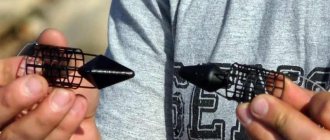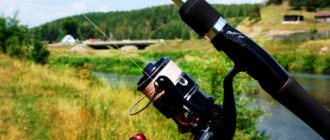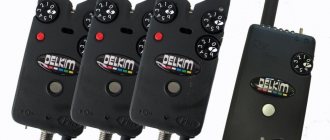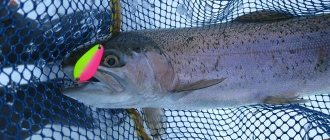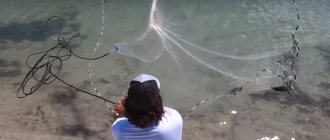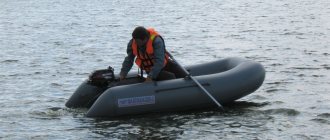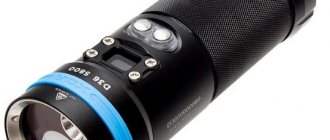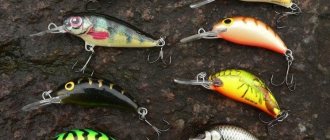A match rod is one of the types of float tackle with which you can comfortably fish long distances. As a rule, fishing with this type of rod is carried out in standing or weakly flowing reservoirs. The object of production when using this type of gear becomes absolutely any type of fish that lives in our freshwater bodies, be it a predatory or peaceful population, because the equipment of a match fishing rod can be in very wide variations. A variety of rigs provides real opportunities for supplying bait of any type and size to the hunting zone, and floats specially designed for fishing with a match fishing rod can allow the bait to sink to depths of varying sizes.
Plug match rod
Both complex in composition and configuration, and quite simple in assembly, can cover any fishing conditions on calm water bodies, based on which we can confidently conclude that match fishing, even for beginners, can become a method of float hunting where you can sufficiently quickly learn the basics of catching almost all types of fish. How to assemble a rod for long-distance fishing, learn how to use it effectively and at the same time have high results in catches will be presented to the reader in the article.
What is a match rod
Match rods in their configuration have a number of common basic assembly elements with both fly and Bolognese tackle. These elements are absolutely identical for some fishing conditions. The main difference from other types of float rods is the structure and size of the blank. The structural features of the fishing rod make it possible to make long casts. Match tackle based on a special fishing rod is equipped with a spinning reel and a main cord, on which the required rigs, consisting of floats, sinkers, leashes and hooks, are based.

The installation components are mostly standard fishing accessories that can be purchased at any fishing store. The only thing is that when purchasing floats you need to be guided by some rules for choosing a product that will provide the possibility of long casting and achieving the desired level of immersion of the bait. A detailed description of the components and necessary fishing accessories, without which the equipment of a match rod cannot be completed, is given in the following sections of the material.
What fishing line is needed for match fishing?
First of all, the requirements that the fishing line in a match rod must meet are softness, strength, low elongation, wear resistance and minimal memory. It is advisable to use a dark-colored fishing line so that the marker marks are clearly visible. And also the fishing line for the match should be sinking - at long distances, the fishing line floating on the surface, even in a light breeze, will carry the equipment away from the baited place.
Nowadays, buying Match series fishing line is not a problem; it is better if it is from a well-known manufacturer, albeit more expensive, but in the end it justifies itself in the future during match fishing. The O on the package means the line is sinking. As a rule, these are monofilament lines of dark colors (brown, black, dark gray) with minimal memory, which allows them to straighten well and not gather in rings after casting.
In order for the fishing line to unwind better from the reel spool and sink after casting, it is recommended to degrease it from time to time. To do this, use a special spray that does not spoil the fishing line, which is generously sprayed onto the fishing line, directly on the reel spool. But if there is no special spray, then a soapy solution of dishwashing detergent is quite suitable.
As for the diameter of the match line, the opinions of anglers vary somewhat. On bodies of water that are close to ideal, athletes use a fishing line of 0.1-0.12 mm, which allows them to make fairly long casts. Some advise using a main line with a diameter of 0.14-0.16 mm. with a shock leader to prevent the heavy float from shooting out. When casting, the entire load falls only on the shock leader made of thick fishing line, therefore the thin main fishing line does not suffer from overloads.
For amateur match fishing, a main line of 0.16-0.18 mm, and in some cases even 0.2 mm, is quite suitable. And as practice has shown, the use of a thicker main line in the equipment of a match rod, even if it affects the casting distance, is not so critical. But with such a fishing line you can perfectly catch roach and trophy carp, especially if you don’t have enough fishing experience. When winding the fishing line onto the reel, do not forget - it is better to underwind 2-3 mm to the side of the spool than to rewind it, because the excess fishing line will sooner or later get tangled when the loops self-reset and come off, and it’s a waste of time and nerves.
Equipment elements
Match fishing to ensure the reliability of connecting equipment elements, limiting the sliding range of floats and preventing tangling, which is often the main problem that seriously affects the casting distance, balancing the float and bait, as well as keeping the installation at a promising point, requires the purchase of auxiliary fishing accessories, which include: relate:
- Small swivels to prevent twisting of cords and tangling of equipment.
- silicone stoppers for fixing bait delivery depths by sliding along the float line.
- special connectors for attaching floats to fishing line in various types of match equipment installations.
- fasteners and carabiners for connecting leashes with main fishing lines.
The fisherman must have all of the above elements in his fishing arsenal on every trip to ensure the assembly of new rigs, as well as the timely repair of damaged and failed float equipment.
Match rod
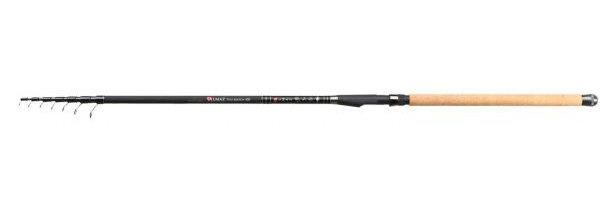
The match fishing rod has a number of features that allow you to make both long casts and high-quality detection of fish by making a sharp hook on a long fishing line. The main design features of the fishing rod include:
- the presence of a long cork or polyurethane handle, which allows you to make long casts without much effort with both hands.
- The design of the match has a plug-in type, mainly consisting of two or three components of the fishing rod.
- The rod blank is made of carbon fiber or composite materials.
- the presence of a large number of passage rings on the tackle, unloading the fishing rod blank and preventing the wet cord from sticking.
- The reel seat mechanism in a match fishing rod is distinguished by its clamping density due to the reliable and reinforced material of the clamping worm pair; as a rule, this construct is made of metal.
A match rod is characterized by certain operating parameters:
- The length of the rod varies from 3.5 to 5 meters.
- The test parameter of the match tackle form falls within the range of 8 to 25 grams.
- The fast action of the fishing rod makes it easier to hook a trophy, increases casting accuracy and improves control of installation with bait.
Selection by length
One of the main selection criteria is length. The type of fishing and the maximum casting range depend on this parameter. The minimum value is 3.9 meters, and the maximum is 4.5 m. However, there are larger representatives that are suitable for a specific type of fishing.
- Length less than 3.9 m
Small models that are designed for fishing at short distances or from a boat. Also, some people use this option for small rivers or when hunting from under bushes. This option is effective, but it is not recommended for novice users to buy them.
- Traditional performance
The optimal solution for amateurs and beginners will be rods whose length is from 3.9 to 4.5 meters. The first option is designed for fishing in places with shallow depths, up to about two meters. There is a drawback here - fishing in this case becomes harder, since most fishing rods are sold heavy, and it is difficult to find light options.
This rule cannot be ignored, since when fishing at great depths, problems will arise with the casting range. The first thing the user will encounter is low accuracy. The second is the correct selection of floats, otherwise it is impossible to cast over a long distance.
Rods with a length of 4.2 meters are almost universal. Sliding or blind equipment can be installed on them, but this does not affect the convenience in any way. The maximum casting distance of the float is 50 meters, which is suitable for most types of fishing. This performance is often recommended for beginners.
For fishing at great depths and with blind equipment, rods 4.5 meters long are used. This is a balanced option that will help you hunt large fish that are located at a considerable distance from the shore.
- Fishing rods 4.8 meters
This design is designed for catching wary fish at long distances. It is important to understand that the terrain for such a rod is selected carefully; it is better if there is a slight current. The recommended weight of the weight is up to 2 grams.
- Long options (5-6 meters)
Such models are intended only for deep-water fishing. They have also proven themselves well when fishing on the river. Even a strong wind will not affect the positive result. In addition, this option will be a good alternative to Bolognese fishing rods. Because in some cases the latter may break due to thin walls. Experienced fishermen use 6-meter match fishing rods for casting with a long float release, while the recommended casting length is 20 meters.
Thanks to the elastic line and friction brake, oversized fishing rods are able to pull out large prey without much effort or damage. Therefore, some professionals use them to hunt powerful carp.
Multi match rods
This category includes fishing rods that can change their length. This is a more popular option, as it allows you to adapt to a specific situation, rather than buying several rods at once. For lengthening, special inserts are used. But this solution also has a downside, because the balance and structure of the tackle deteriorates.
It is best to use this option when fishing in unfamiliar bodies of water, as it is difficult to establish the depth there. Therefore, a variable rod will be an effective tool and will allow you to fish from the shore without any problems.
Coil
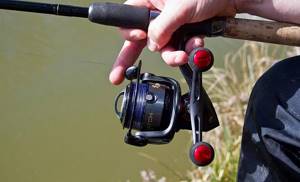
Match fishing rods are necessarily equipped with an inertia-free reel, which provides storage of fishing line, the volume of which is necessary for feeding bait over long distances, and also simplifies the process of landing fish by means of a friction clutch, protecting the equipment from breaking due to excessive overloads. The inertia-free machine for the match is chosen in a lightweight version without unnecessary functionality, such as a baitrunner, which weighs down the mechanism. In most cases, the acceptable weight of the coil does not exceed 250–300 grams. The capacity of the spool should allow you to easily fit 150–200 meters of nylon fishing line with a diameter of 0.1 mm. Thus, a reel for match fishing should be marked 1500–2500 units, which will cover any fishing conditions and provide the required line supply.
The presence of five or even three bearings can guarantee smooth and reliable operation of the mechanism. Their excess quantity will only make the device heavier and make it more sensitive to maintenance, which will require extra time and material resources, which are not always justified when conducting this type of fishing. To quickly reel out the line from long distances in match fishing, I use mechanisms with a high gear ratio starting from five, sacrificing the traction parameters of the reel. The friction brake must be quite finely adjusted, which is something you must pay attention to when purchasing. Its location does not play a significant role in the fishing process, and the angler determines the front or rear version of the location of the function based on his personal preferences.
What kind of reel is needed for match fishing?
Ideally, long-casting reels should meet the following requirements:
- finely and smoothly adjusted friction brake;
- high-quality laying (without hills, dips and loops) of thin fishing line;
- high gear ratio - from 5.7:1;
- shallow large spools (conditional size 3000-4000);
- large line roller with built-in bearing.
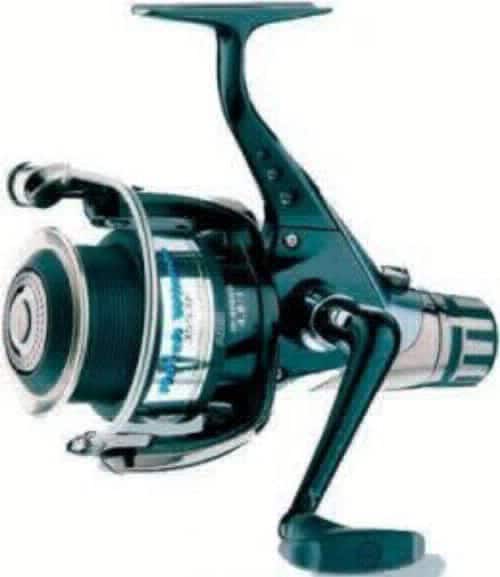
All of the above requirements are fully met by special match reels, which are available from almost every manufacturer. Match series reels are fast reels with small spools, since for long casting it is very important that the spool on the reel is filled as much as possible with fishing line. However, to begin with, you can use any spinning reel with a deep spool, having previously wound the backing under the fishing line.
The high gear ratio of the coil also, one might say, is not of fundamental importance. It is much more important to have a reliable friction brake, since match fishing involves the use of fairly thin fishing lines. Therefore, a finely and smoothly adjustable drag on the reel is a prerequisite and the key to success when fishing for trophy specimens. Front or rear location of the clutch - whichever is more convenient for you. It is also important to ensure high-quality laying of the line from side to side of the spool without hills or dips. This will save you from unpleasant situations with tangling and beards on the line when casting.
fishing line
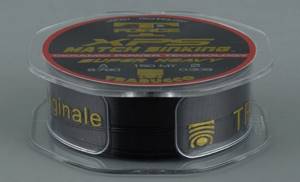
Match equipment is delivered to the fishing zone on monofilament fishing lines specialized for match fishing. Manufacturers produce these fishing lines with special physical properties that allow the cords to sink spontaneously. The specific density of such threads is much higher than the density of water, and when the equipment splashes down, the fishing line immediately goes into the water column, thereby significantly reducing the windage of the installation. In addition to this feature, fishing lines specialized for match have low memory with average stiffness parameters and low stretch coefficients compared to conventional monofilament, which has a better effect on the sensitivity of the equipment.
Depending on the fishing location, where there are differences from the usual color of the water, monofilament can be selected in both transparent and black colors. As a rule, the diameter of the main lines on a fishing rod varies in the range from 0.15 to 0.20 mm. When using a shock leader, the end of the installation of 5–10 meters is made from threads of 0.22–0.25 mm.
Fishing with a match rod and its features
Match is one of the varieties of regular float fishing. Its distinctive feature is the ability to deliver bait over very long distances, which makes it possible to hunt large but shy fish. Since the range often exceeds 70 meters, forms can reach a length of 5 m.
Match fishing occurs more in reservoirs with stagnant water or with a gentle current; in the latter case, bait is not always used. When fishing, an experienced angler can have quite a few different accessories, for example, a marker rod for measuring depths.
The blank for match fishing is very light, but at the same time has decent strength. This is the case if purchased from a reliable manufacturer. The length of the form varies from 360 to 550 cm; which one to choose for yourself depends on the fishing conditions, for example, how overgrown the coastal zone is.
We wrote about rods in detail in the article “Match fishing on the river without any tricks.” The most common length of the blank is 450 cm. With similar fishing rods, the casting range can be up to 50 m, and they do not seem bulky due to their length.
Such whips have three, sometimes four plugs with a large number, up to 16, of throughput rings, the number of which allows you to evenly distribute the load throughout the rod. This helps provide the necessary strength.
The guide rings are mounted on high stands, due to which the wet line does not stick to the whip. The form itself is made of carbon fiber, the handle is made of neoprene or cork. The latter is preferable, since any contaminants, even fish mucus, can be easily removed.
Depending on the fishing conditions, you can select the following forms:
- classic, designed for fishing in the current or in still water;
- carp fishing rods;
- long-casting rods, the fishing distance of which exceeds fifty meters.
All of these whips vary in length, test and action. And the discrepancy between the weights of the baits is fraught with the risk of breaking the form until the cast is not far away. In principle, as practice shows, when fishing for bream, crucian carp, roach and other peaceful fish, the casting range is on average 30 meters, while the weight of the bait is within 10-15 grams.
You can use any rod from parabolic to semi-parabolic with a length of 390-420 cm with the appropriate test for match fishing. You don’t have to pay much attention to strength, since, firstly, the fish being caught is not trophy, and, secondly, the structure of the rod allows you to smooth out jerks when fishing.
Float
Match fishing would not be complete without the use of one of the most high-tech installation elements, namely a float. For this type of fishing, specialized alarms are produced with combined functions, focused not only on biting control, but also influencing the range of casting the bait and its delivery to the required deep fishing horizon.
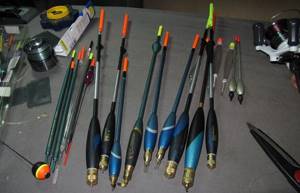
The match float can be characterized as follows:
- a spindle-shaped float made of a lightweight material, often balsa or cork, with a durable coating of moisture-resistant paint in a neutral color.
- The float antenna is made of plastic and painted in a dotted pattern horizontally in white-red or yellow-red. Models of floats can have the ability to increase the length of the antenna or reduce it, and also be equipped with a bright boss on the top, which plays the role of not only a beacon for monitoring the accessory, but also serves as a stabilizer.
- The float has a built-in weight with a loop for attaching to a fishing line. In addition, such a constructive solution acts as a keel. Some models provide the ability to change the load by removing or adding ballast washers required by fishing conditions.
Match floats at commercial fishing points can be found under the name waggler. The test for such an accessory starts with four grams. An assembled rig with a sliding float is one of the most common options for mounting used for a match.
Additional loading
Additional weight is placed below the float for better balance of the entire equipment. The float is loaded using cut lead pellets of various weights.
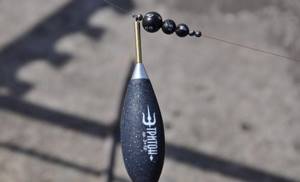
Important! The required number of pellets is clamped on the fishing line in such a way that they are able to move along the thread only with the application of a certain force on the part of the fisherman and in no way can they move spontaneously.
Blind installation of weights prevents the equipment from becoming tangled when casting, thereby not reducing the aerodynamic properties of the equipment. The use of sliding sinkers in a match is inconvenient due to their unpredictable position during casting, which constantly leads to overlaps and tangling of installation elements; moreover, they are impractical when adjusting the load, in the event of which it is necessary to radically change part of the entire equipment.
Leash with hook
Not a single method of match installation of equipment is complete without the use of a leash with a hook. It is recommended to attach the leashes to the main cord using a small swivel to prevent the line from twisting due to rotation of the bait when winding the gear. The thickness of the leads is optimal in the range from 0.10 to 0.12 mm. In combination with a finely adjusted friction brake, even such miniature fishing lines help catch and fish out trophies weighing a couple of kilograms without fear of equipment breakage.
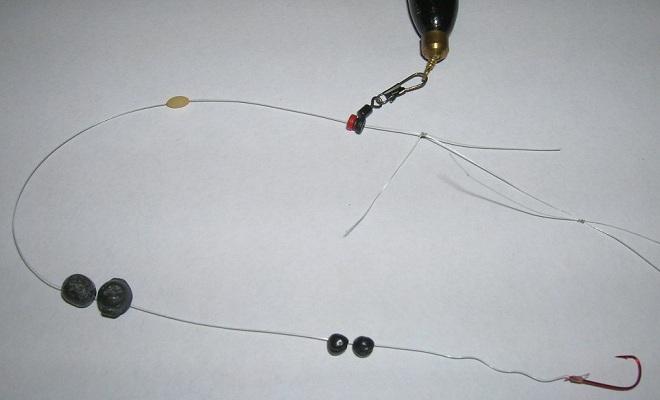
The length of the leash is selected based on the fishing conditions and can be in sizes from 10 to 50 cm. Hooks are used based on the expected size of the fish caught and the type of bait used for fishing. The design of the connecting element of the hook does not affect the efficiency of installation, the main thing is that the fisherman has the skill of making a reliable knot, depending on the type of fastening eye.
Methods for installing match equipment
Fishing with a match rod can be carried out in two main ways of equipment - blind and sliding. These methods are used based on the fishing depth. If fishing is carried out in water areas where it is necessary to deliver bait to the horizon up to three meters, it is more practical to use a blind installation method. If the depth exceeds this level, then only sliding installation can provide comfortable fishing.
Important! It is worth noting that sometimes, even when fishing in shallow waters, anglers use the sliding method of equipment, which is much more sensitive than the blind method of equipment and allows you to catch cautious, passive and timid fish.
Active fish are caught using the universal or blind method. Although the method provides long-distance and accurate casts, it is considered rough and in a match it is used much less frequently than the sliding method of installation. Regardless of the method, equipment is distinguished by the amount of its additional load. They are used in different weather fishing conditions and for the need to quickly achieve the desired bait supply level. Thus, a lightweight design with a load of up to one gram is used in calm, windless weather on a reservoir with shallow depth. The medium version with a load of 1-1.5 grams is used for fishing in low waves at depths of up to 3.5 meters. The heavy version with a weight of over two grams is used under conditions of moderate wind loads, in deep areas of water areas.
Match fishing rod rigs
Fishing with a match fishing rod will be more effective with properly selected equipment. With all the variety in the selection of floats, fishing lines, sinkers and hooks, all equipment for a match fishing rod is divided into three types.
Types of match equipment
- Sliding with waggler.
- Deaf with waggler;
- Slider.
Each type of match fishing rod equipment has its own area of application and features.
Common to all types of match fishing rod rigs is the mass characteristic. It is most often in the range of 15 – 20 grams. Heavy equipment is used less often - up to 30 grams.
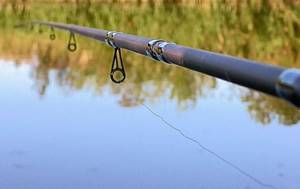
Universal – sliding waggler
This equipment can be called universal because it can be used for most fishing conditions.
It is also used at fishing depths of up to 6 – 8 meters. But at maximum depths, the time of lowering to the bottom, due to the insignificant mass of the load near the hook, increases.
A heavy float, loaded at the bottom, is used. Sinkers are selected with a total mass of no more than 50% of the mass of the float.
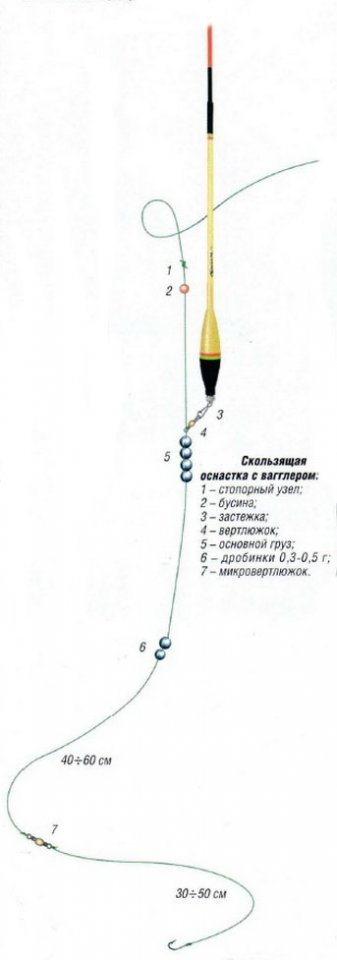
Thanks to this mass ratio, the necessary flight qualities of this equipment for a match fishing rod are ensured.
Heavier and having good aerodynamics, the float carries the rest of the equipment along with it in flight.
So that the equipment does not get confused - how to load
To ensure that the rig straightens before splashdown, it is advisable to brake the spool by hand. This technique minimizes the overlap of the fishing line, and also reduces the splash from splashing down the equipment. Actually, this is the peculiarity of controlling this equipment for a match fishing rod.
If the mass of the sinkers is greater than the specified value and approaches the mass of the float, the tackle with a different center of mass will spin in flight. Such options are practically not used.
With proper mass balancing, the flight qualities of this equipment for a match fishing rod are generally satisfactory and allow you to cast 40 meters and further. Power casting is possible when you need to ensure maximum distance or overcome crosswind resistance.
Slider
Its peculiarity is that the mass of the load exceeds the mass of the float by 2–3 times. The float is used practically unloaded, without internal loading. This distribution of masses also determines a characteristic feature of the behavior of the equipment in water - it sinks to the bottom as quickly as possible.
Therefore, the preferred area of its use on a match fishing rod is significant fishing depths - up to 10 meters.
The distribution of the load allows the tackle to perfectly withstand surface currents and wave loads on the float. Therefore, the “slider” pattern for a match fishing rod is also used in case of significant side winds.
Slider Features
The possibility of use in windy weather is also determined by the ability of such equipment to “break through” the side wind, although in this case it is necessary to make some adjustment to the leeward side.
But the other side of the “coin” of shifting the center of mass towards the sinkers is the insignificant casting range. In this case, you can only throw the tackle along a flat trajectory.
Loss of sensitivity is also typical due to the significant mass of the load.
You can reduce the likelihood of the fishing line tangling behind the float (and the leash over the sinker) by adjusting the location of the sinkers on the fishing line.
Blind equipment
The simplest equipment for a match fishing rod in terms of design. A non-slip float is used here, which is attached to the fishing line at one point. It can be attached in a variety of ways, incl. and using an adapter.
The scope of application of such equipment is limited. It is most often used if the fishing depth does not exceed two-thirds of the length of the rod - in fact, up to a depth of 2.5 meters. If you master the handling of such gear well enough (the main thing is casting), and in the case when the shore is free of obstacles, you can use it at depths exceeding up to 1 meter the length of the rod.
The distribution of masses in this equipment is as follows. The mass of the load on the fishing line is no more than 20% of the mass of the float.
This achieves both good flight performance and the highest sensitivity of the gear, compared to other types of equipment. Also, due to the low loading weight, the equipment is resistant to overlaps.
Fishing with blind rigs
The specified load weakly resists water currents, therefore it is practically not applicable if more or less noticeable currents are present in the reservoir. It cannot be used at significant depths.
The distribution of loads on the fishing line can be very diverse. A scheme is often used where part of the sinkers are located directly under the float, actually serving as a float stopper.
The scheme is best suited for fishing in ponds with still water, in which, as a rule, significant depths are located far from the shore.
The heavy float in this design allows you to achieve maximum casting distances - up to 60 meters. Fishing can be carried out in vast shallow bays - a common situation in fishing. At the same time, by distributing the weights and using a small load near the hook, you can achieve the most natural sinking of the bait to the bottom. Used for catching carp in lakes and fisheries.
Match fishing technique
After choosing a place that is promising for fishing, which is selected according to the criteria for possible fish parking, as well as the convenience of casting gear from the shore of a reservoir, the angler begins to equip the rod with the installation required by the fishing conditions, having previously carried out the starting feeding of the fishing point. It’s more rational to prepare rigs at home, in real fishing conditions by only connecting the necessary options with the main fishing line and thus saving time. Having equipped the rod with bait, cast.
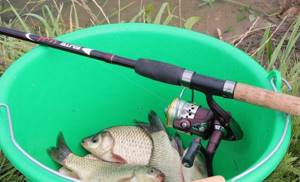
The rigs are cast vertically 5–10 meters further than the fishing point, subsequently winding the cord, bringing the bait into the fishing zone without alarming the fish with a sinking weight. To simplify the fishing process, ensuring a constant distance for feeding baits, a mark made with a special marker on the fishing line helps.
Important! Immediately before casting, by pulling the cord with your finger in front of the reel, check the rig for free movement of the line, making sure there are no overlaps, and only after that, make the required swing.
On a correctly loaded float, only the antenna will be visible from the water. The line should submerge under water. Increasing the dive speed can be achieved by lowering the tip of the rod into the pond. After the bite begins, the right moment is selected to hook the trophy. Due to the large distance from the shore, hooking is carried out with a wide pull of the rod in the opposite direction of the movement of the float or behind the angler’s back. Having felt the prey caught on the hook, they begin fishing with a reel, taking the hauled trophy into the landing net.
Blind equipment
The float can be attached using several methods (an adapter is also used). The equipment is limited in use. It is often used at shallow depths of up to 2.5 m.
Having mastered the correct casting of the tackle, it is used a little deeper, up to about 3–3.5 meters. This tackle has good flight qualities and high sensitivity.
The small weight of the load cannot withstand the fast current, and does not allow the use of equipment at significant depths.
Sinkers on the thread can be fixed using various schemes. Common distribution: a certain amount of weight can be placed under the float itself.
This scheme is suitable for fishing in small reservoirs, where significant depth is located at a great distance from the shore.
With the help of a heavy waggler you can make casts with a maximum range of 60 m.
Popular models
Choosing a match rod is quite a painstaking and difficult task. Today's fishing market offers a huge range of options for choosing this specialized gear, but not all of the models offered meet the necessary requirements for match fishing. As a rule, a fisherman buys a fishing rod for long-term use and saving money when buying gear is not the best way to reduce the cost of a set. To guarantee long and reliable operation of your fishing rod, we advise you to purchase fishing rods from brands that have long been proven in fishing practice.
Thus, the best match fishing rods are produced by Shimano , Daiwa , Trabucco and Salmo . The gear of these manufacturers is in the middle and high levels of its cost, but its reliability and comfort during fishing justify the material investment. Among the budget options, it is worth paying attention to the domestic matcha model from the Volzhanka .
Rating of rods of especially heavy class
Volzhanka Feeder Match IM7 3.3 m
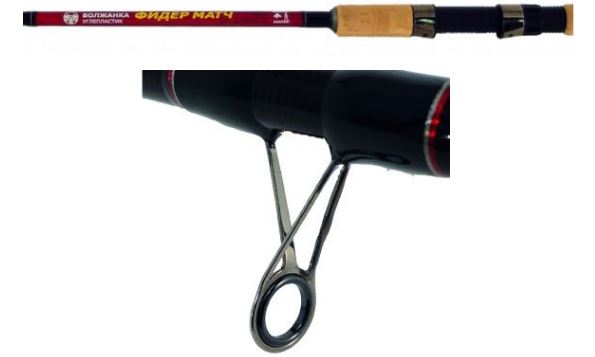
A high-quality series of fishing rods, which are made of durable material with high rigidity. The apices are sensitive, connected to the middle section. The product can cope with small and large fish. Transport value – 1.15 meters, test – 90/25 g.
Sold at price: 3,230 rubles.
Volzhanka Feeder Match IM7 3.3 m
Advantages:
- Good build;
- Strength;
- High power;
- Weight – 252 g;
- 16 rings.
Flaws:
- Not found.
Browning Hot Rod Combi Feeder
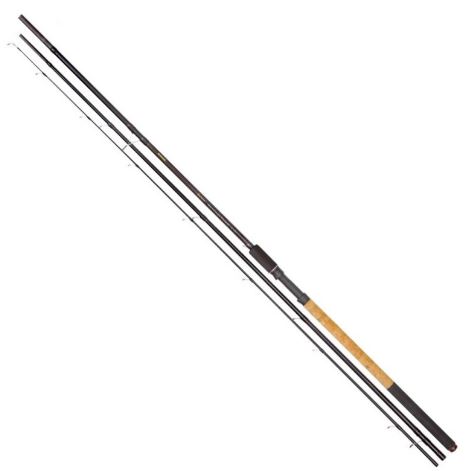
A budget solution that is suitable for beginners. The size is 3.3 meters, allows you to hunt at short distances, while the cast is accurate. The product can cope with both light and large fish. Number of knees – 2+1. The maximum test is 50 g, which is a good solution and allows you to use large bait.
The average price is 7,350 rubles.
Browning Hot Rod Combi Feeder
Advantages:
- Strength;
- Good build;
- Optimal length;
- Doesn't take up much space.
Flaws:
- Not found.
COLMIC Polar Match 4.2 m
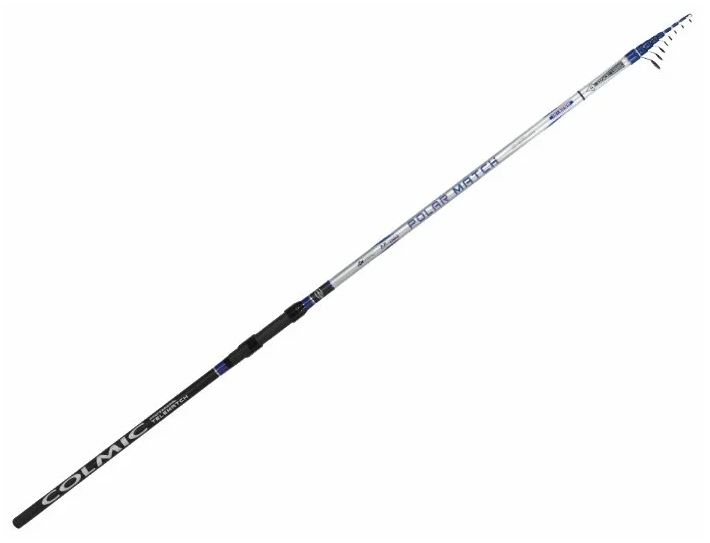
A good telescopic model that will help you catch fish at medium and long distances. Number of sections – 4 pcs. The diameter of the bottom is 17.8 mm. The product is made of carbon with the addition of carbon fiber. This increases the strength characteristics. The hooking with such a fishing rod is good, and the chance that the fish will jump off the hook is minimal. Test – 10-80 g.
Sold at a price of 7,400 rubles.
COLMIC Polar Match 4.2 m
Advantages:
- Convenience;
- Works with large fish;
- You can cast over long distances;
- Efficiency.
Flaws:
- Not detected.
